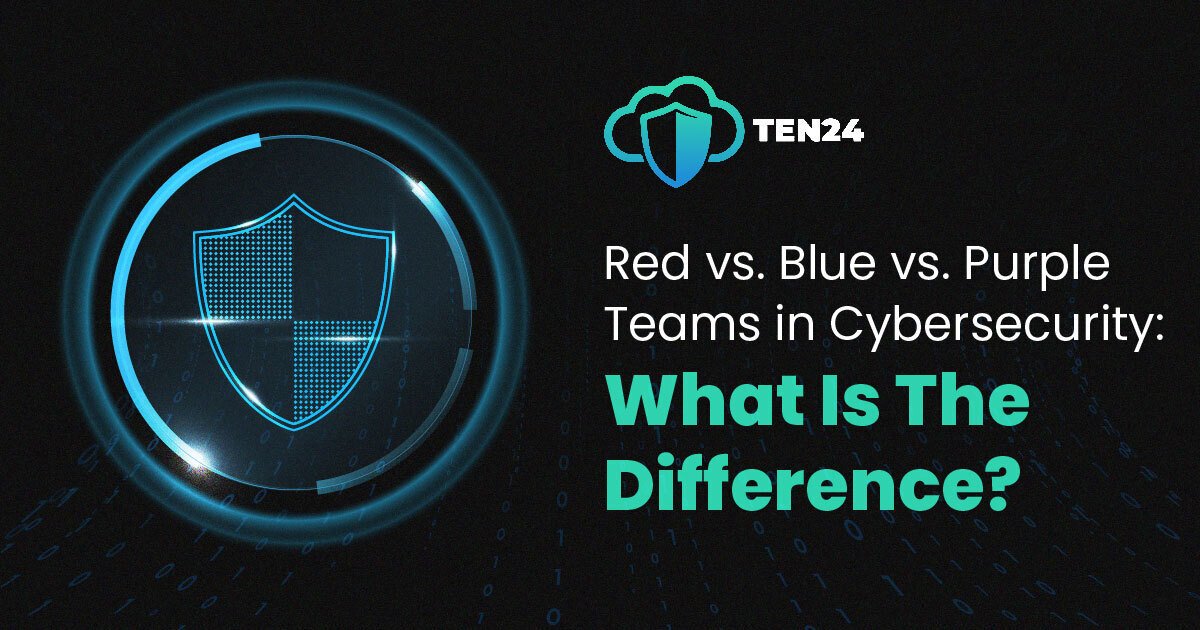As a part of analysing an organisation’s present cyber posture, system robustness, and risk

Red vs. Blue vs. Purple Teams in Cybersecurity: What is The Difference?
As a part of analysing an organisation’s present cyber posture, system robustness, and risk exposure, organisations consistently turn to colour-coded cyber security teams exercise. These complex cyber security situations test an organisation’s tams, systems, and processes for weaknesses.
Typically, these teams are labeled as red, blue, and purple, even though, sometimes more teams are likely to be involved. Each cyber security team has a part to play in assisting to strengthening the overall protection of the one or more participating companies.
And while sometimes these cyber security teams are created for the purpose of routine cyber security monitoring, such as an annual security assessment, at particular organisations, cyber security teams are divided up by red vs. blue.
In this article, we will walk through some of the common responsibilities and roles of these cyber security teams that are either particularly assigned to in-house teams, if possible, or often contracted from the outside for an assessment.
What Are Red Cyber Security Teams?
In a cyber security simulation, a red cyber security team is a group of ethical hackers or cyber security experts who pretend to be attackers. The primary core of their job is to stimulate real-world cyber-attacks and attempt to break through an organisation’s defenses. They swiftly mimic tools, procedures (TTPs), and tactics of real attackers to uncover vulnerabilities, exploit them, and then lastly gain access to organisation’s data.
The red team carefully approaches the system’s security from the attacker’s point-of-view, utilising different methods such as social engineering and manipulating their vulnerabilities in networks and systems. Their end goal is to identify weakness in the company’s security posture, including processes, technologies, and people.
The blue team is considered red team’s enemy in this scenario. By stimulating a cyber-attack, they put blue team’s ability to detect, respond to, and contain the attack recognition to test.
What Are Blue Cyber Security Teams?
A blue cyber security team is the defensive, proactive side of cyber security equation. They are accountable for defending a company’s system and data cyber-attacks during cyber security monitoring stimulation. Usually, these are the most typical types of folks to work in house at an organisation. Also, it is not out of the blue for a red team to be outsourced by companies to put blue team’s responses to test.
Blue teams act as the company’s security personnel, constantly monitoring systems for suspicious activity and implementing defensive measures to prevent cyber-attacks. It is blue team’s responsibility to identify and patch vulnerabilities in networks and systems to reduce/minimise the attack surface.
By collaborating with red team, both teams assist organisations strengthen their overall cyber security posture.
What Are Purple Cyber Security Teams?
Purple cyber security teams bridge the gap between red teams (attackers) and blue teams (defenders). It is a collaborative approach that mixes the expertise of both the teams to achieve a more comprehensive understanding of a company’s security posture.
The role of the purple team is to share details, insights, and strategies to identify and acknowledge weakness effectively.
Usually, purple cyber security team is an ongoing process that assists companies continuously enhance their security posture through simulating real-world attack scenarios, identifying vulnerabilities, and implementing better defensive strategies.
The red teams share their cyber-attack techniques with the blue team, helping them enhancing their response and detection capabilities. The blue team’s cyber security monitoring strategies assists red team to refine their attacks methods to stay one step ahead of the evolving threats.
Final Thoughts
While it’s possible to have a cyber security teams without distinct red, blue, and purple functions, integrating all three creates a powerful synergy that significantly fortifies an organization’s defenses.
Red teams simulate attacks to expose vulnerabilities before real threats can exploit them. Blue teams are the vigilant protectors, implementing safeguards, monitoring for suspicious activity, and swiftly responding to incidents. Purple teams, acting as the bridge between the two, foster a comprehensive view of the organization’s security landscape, continually refining strategies through insights gained from realistic attack scenarios.
When these teams work in harmony, they form an unbeatable shield against evolving threats.
